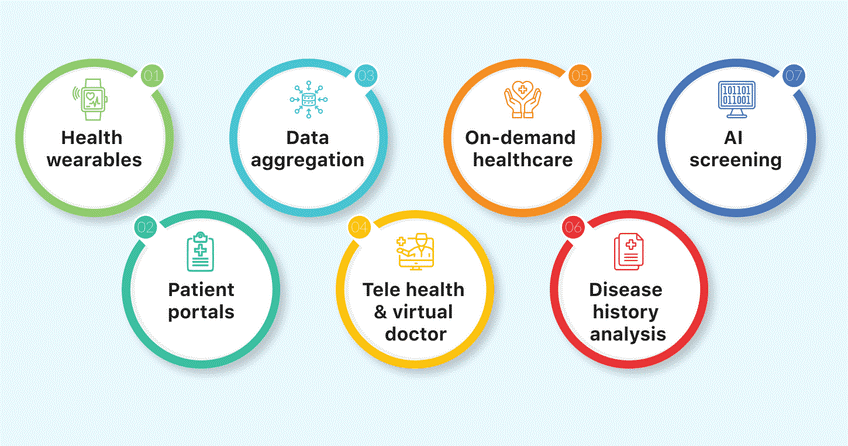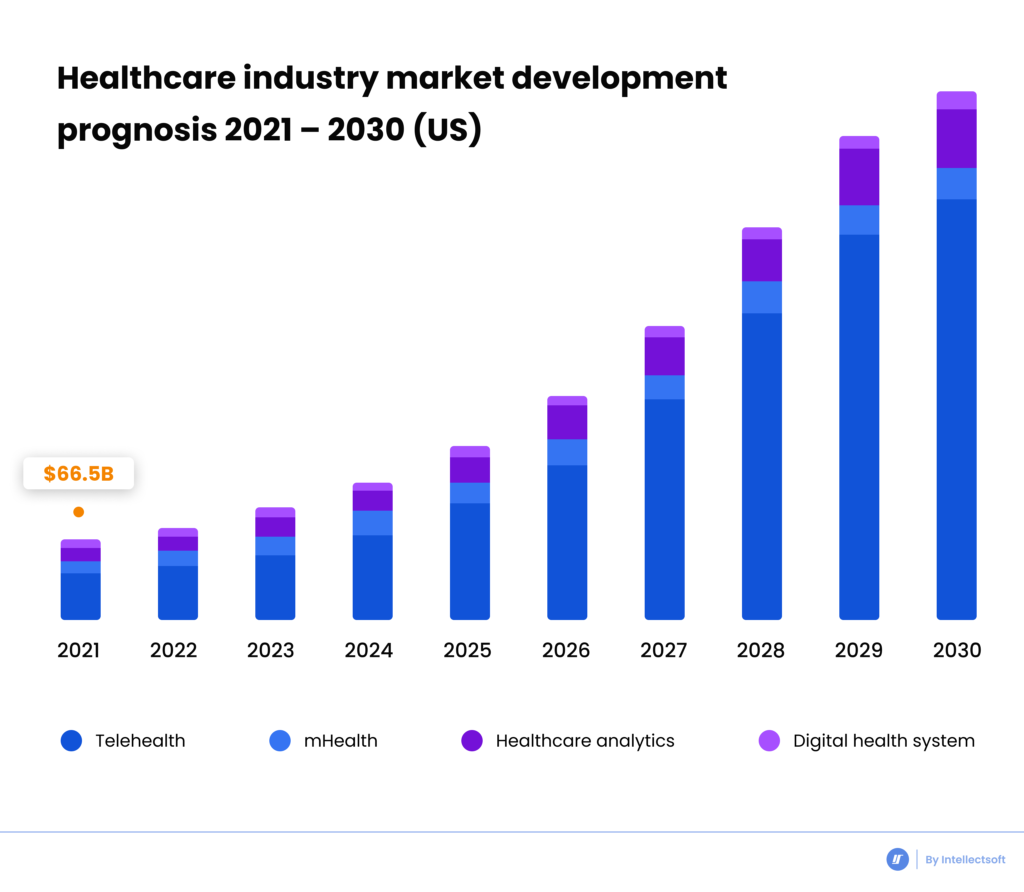
@ShahidNShah


The healthcare industry is undergoing a digital transformation, with organizations adopting digital technologies to improve patient outcomes and reduce costs. However, healthcare providers and hospitals require a value-driven digital strategy framework to remain competitive and generate revenue. This article explores the value-driven digital strategy framework, its components, and how healthcare organizations can implement it to achieve their business objectives while improving patient outcomes.
The value-driven digital strategy framework consists of four components that healthcare organizations must address to leverage digital technologies effectively. The four components are Digital Business Strategy, Digital Patient Experience Strategy, Digital Operational Strategy, and Digital Data and Analytics Strategy. A strong digital strategy can lead to reduced costs, improved efficiency, and better patient outcomes.
Implementing the value-driven digital strategy framework requires a cross-functional team of leaders from different departments within the organization. The team should have a clear understanding of the organization’s goals and objectives and how digital technologies can help achieve them. The team should also develop a roadmap for implementation and prioritize initiatives based on their potential impact on patient outcomes, operational efficiency, and revenue generation.
The value-driven digital strategy framework can help healthcare organizations and hospitals to achieve their business objectives while improving patient outcomes. By embracing digital transformation, healthcare organizations can continue to improve patient outcomes and reduce costs while remaining competitive in the digital age.

Source: Top digital transformation trends in healthcare
Improving Patient Financial Experience
In the healthcare industry, delivering a positive patient financial experience is crucial for organizations and hospitals. Patients expect a smooth and transparent financial process, and healthcare providers are under pressure to deliver. A positive patient financial experience can increase patient satisfaction and loyalty, which can lead to increased revenue in the long term.
Connecting payers and providers is essential for creating a more transparent financial process for patients. By working together, payers and providers can share data on patient coverage and payment histories, create payment plans, and offer discounts for patients who need them. Technology can play a major role in improving the patient financial experience. Healthcare providers can use technology to automate billing and payment processes, reducing errors and streamlining the financial process. Additionally, technology can provide patients with real-time access to their financial information, including payment histories and outstanding balances.
Healthcare providers can also improve the patient financial experience by providing better education and communication. Patients often feel overwhelmed by the complexity of the healthcare billing process, and healthcare providers can help by providing clear, concise information. This can include information on insurance coverage, payment options, and financial assistance programs.
Healthcare delivery organizations and hospitals have a critical role in shaping the future of healthcare. As the healthcare industry evolves, organizations must adapt to the latest trends and technologies to remain competitive and provide the best care to their patients. Three predictions for the healthcare industry and strategies are listed below for healthcare delivery organizations and hospitals to prepare for these changes.
The COVID-19 pandemic has accelerated the adoption of virtual care in the healthcare industry. Patients have become accustomed to the convenience of telemedicine, and providers have seen the benefits of increased access to care and reduced costs. Virtual care can benefit healthcare delivery organizations and hospitals by reducing the need for in-person visits, which can lower costs and improve efficiency. It can also improve patient access to care, particularly for those who live in remote or underserved areas.
Healthcare delivery organizations and hospitals should prepare for the increased adoption of virtual care by investing in technology infrastructure and training staff on telemedicine applications. They can work with vendors to ensure that virtual care systems are secure and compliant with regulatory requirements. Additionally, they can develop policies and procedures for the ethical use of virtual care in healthcare.
Artificial intelligence (AI) is already being used to improve diagnostics, personalize treatment plans, and automate administrative tasks. By 2023, AI will be even more integrated into healthcare delivery, enabling providers to make more accurate diagnoses and create more effective treatment plans. It will also help reduce administrative burden and increase efficiency.
Healthcare delivery organizations and hospitals can prepare for the integration of AI by investing in technology infrastructure and training staff on AI applications. They can also work with vendors to ensure that AI systems are secure and compliant with regulatory requirements. Additionally, they can develop policies and procedures for the ethical use of AI in healthcare.
Patient data security and accessibility are critical concerns for healthcare providers. As healthcare evolves, patient data will be stored in more places and accessed by more people, creating a higher risk of data breaches and privacy violations. Healthcare delivery organizations and hospitals must prepare for these changes by taking steps to ensure the security and accessibility of patient data.
Healthcare delivery organizations and hospitals must take steps to ensure the security and accessibility of patient data. They can invest in cybersecurity systems and regularly update them to address new threats, conduct regular audits, educate staff, implement access controls, and establish data governance policies and procedures to ensure that patient data is accurate, complete, and up-to-date.
Healthcare delivery organizations and hospitals must prepare for the ways in which healthcare innovation will evolve by 2023. By embracing changes, connecting payers and providers, and implementing the steps outlined in this article, healthcare providers can improve patient outcomes, reduce costs, and increase efficiency. As healthcare continues to evolve, healthcare delivery organizations and hospitals must remain agile and adaptable to provide the best care to their patients.

Source: Healthcare industry market development prognosis
Digital transformation and innovation have become critical components of the healthcare industry, and healthcare delivery organizations need to embrace these changes to stay competitive and provide better patient care.
To achieve successful digital transformation and innovation, healthcare organizations must prioritize investments in advanced technologies such as AI, machine learning, and blockchain. Additionally, organizations must collaborate with technology partners, vendors, and stakeholders to develop and implement new solutions that can help improve patient outcomes, enhance operational efficiency, and reduce costs.
Healthcare organizations must also focus on enhancing their data management capabilities by adopting robust data analytics platforms that can collect, analyze, and interpret vast amounts of patient data in real-time. This will enable healthcare providers to make data-driven decisions, personalize patient care, and optimize clinical workflows.
In addition to technological advancements, healthcare organizations must also prioritize the development of a culture of innovation by promoting a mindset that encourages experimentation, risk-taking, and continuous learning. This can be achieved by providing training, resources, and incentives that empower employees to embrace new technologies and ideas.
Ultimately, by embracing digital transformation and innovation, healthcare delivery organizations can improve patient care, increase efficiency, reduce costs, and maintain a competitive edge in a rapidly evolving industry. As such, it is imperative for healthcare organizations to prioritize these efforts to stay relevant and meet the needs of their patients in the years to come.
The healthcare sector is going through a digital transformation and the COVID-19 pandemic has further accelerated the adoption of digital technologies. In healthcare delivery organizations, current technological scenarios for digital transformation include telemedicine, electronic health records, artificial intelligence, wearable technology, and virtual reality. These technologies are being utilized to improve patient outcomes, reduce costs, and enhance the patient experience. Healthcare organizations seeking technological solutions to improve their services and increase patient engagement can consider the following options:
Comarch CardioVest
Comarch CardioVest is a solution for healthcare professionals to monitor adult patients with heart problems. The system records ECG data, automatically detects crucial disorders, and transfers data wirelessly to a telemedicine platform for analysis. The simple modular structure and wireless data transmission allow for easy monitoring and analysis after every 24 hours.
GlobalMed ClinicalAccess® Stations
The GlobalMed ClinicalAccess® Station is a modular telemedicine station that offers a range of examination capabilities. It has an innovative design, integrated video conferencing software, and connected medical devices for secure and quality healthcare solutions. The station is efficient, intuitive, and secure with locking compartments and HIPAA-compliant image transfer software.
HeartLander™
HeartLander™ Robotic Walker System is a new medical device for minimally invasive surgical procedures on the surface of a beating heart. It provides a stable mobile platform for cardiac surgeries and offers precise, accurate procedures with faster protocols and lower radiation exposure for patients.
As healthcare technology continues to advance, it becomes increasingly important for US hospitals to prioritize patient-centered care as a means of enhancing the patient experience. Today’s …
Connecting innovation decision makers to authoritative information, institutions, people and insights.
Medigy accurately delivers healthcare and technology information, news and insight from around the world.
Medigy surfaces the world's best crowdsourced health tech offerings with social interactions and peer reviews.
© 2025 Netspective Foundation, Inc. All Rights Reserved.
Built on Jul 11, 2025 at 12:10pm